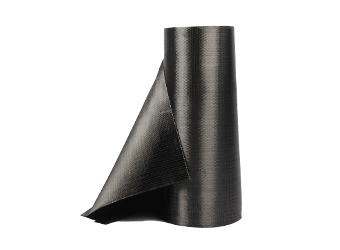Solutions
Horse Construction offers full range of structural strengthening materials with technical supports, documentation supports, products supports, project supports.
How To Improve The Bonding Performance Of Fiber And Cement
"For fiber reinforced materials, their mechanical properties not only depend on the properties of fibers and cement based materials, but also on the adhesion between them. What are the factors that affect the interfacial adhesion between fibers and cement matrix?"?
Fiber type
Generally speaking, the tensile strength of fibers is two orders of magnitude higher than the tensile strength of cement matrix. Correspondingly, synthetic fibers, carbon fibers, and aromatic polyamide fibers with high elastic modulus have a high elastic modulus ratio to the matrix, and when combined with the cement matrix under stress, they are more conducive to the transfer of stress from the matrix to the fibers, thereby effectively inhibiting the expansion of cracks and increasing the adhesive strength of the matrix; At the same time, fibers with high elastic modulus generally have a small Poisson's ratio, and are not prone to elongation and deformation during the pulling process.
Fiber length and aspect ratio
When using continuous long fibers, due to the good adhesion between the fibers and the cement base, the reinforcement effect of the fibers can be fully utilized. When using short fibers, their length and aspect ratio must be greater than their critical values, and the fiber reinforcement, toughening, and crack resistance effects are more obvious. Because at the same bond strength, fibers with a large aspect ratio also have a larger contact area with the substrate, thereby improving the bond performance.
When using continuous long fibers, due to the good adhesion between the fibers and the cement base, the reinforcement effect of the fibers can be fully utilized. When using short fibers, their length and aspect ratio must be greater than their critical values, and the fiber reinforcement, toughening, and crack resistance effects are more obvious.
Select an appropriate aspect ratio in engineering applications. If the aspect ratio is too small, the fiber is easily pulled out of the matrix when the composite material is damaged due to the small contact area; Too long a length to diameter ratio can easily lead to uneven fiber mixing and reduced workability. Therefore, under the same adhesive strength, fibers with a large aspect ratio also have a large contact area with the substrate, which can effectively improve the adhesive performance.
Fiber orientation
When all continuous fibers are arranged along the stress direction, the fiber utilization rate is the highest, with an efficiency coefficient of 1.
B. When short fibers are distributed in a two-dimensional random direction on the plane, the overall utilization efficiency of the fibers depends on whether all fibers have a certain orientation. When they are randomly distributed, their utilization efficiency is low, with an efficiency coefficient of only 0.38; When they have a certain orientation tendency, the utilization rate can be increased to 0.76.
When continuous fibers are arranged in two orthogonal directions on a two-dimensional plane, the efficiency coefficients of the fibers in both directions can reach 1.0. (This situation is usually applied to fiber mesh cloth)
D. When the short fibers are distributed in three-dimensional random directions, the fiber utilization rate is the lowest, and the efficiency coefficient is only 0.17~0.20.
Fiber shape
The cross-sectional shape, shape, surface roughness, and surface quality of fibers also have a significant impact on the adhesive properties.
You can find anything here you are in need of, have a trust trying on these products, you will find the big difference after that.

High strength, unidirectional carbon fiber wrap pre-saturated to form a carbon fiber reinforced polymer (CFRP) wrap used to strengthen structural concrete elements.

High strength, unidirectional carbon fiber fabric pre-saturated to form a carbon fiber reinforced polymer (CFRP) fabric used to strengthen structural concrete elements.

High strength, unidirectional carbon fiber sheet pre-saturated to form a carbon fiber reinforced polymer (CFRP) sheet used to strengthen structural concrete elements.